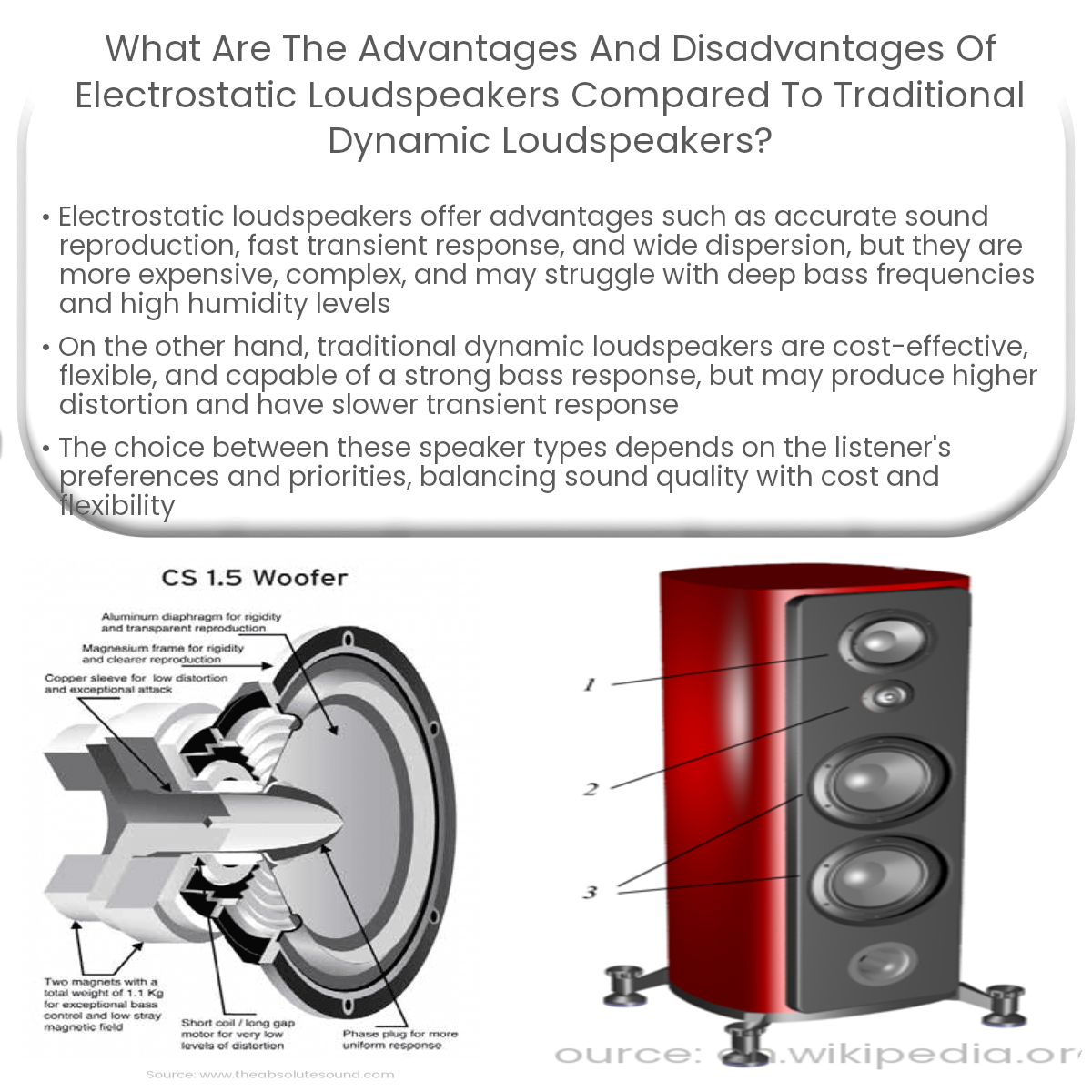Electrostatic speakers offer accuracy, transient response, and dispersion, while dynamic speakers provide cost-effectiveness, flexibility, and bass response.
Advantages and Disadvantages of Electrostatic Loudspeakers
Electrostatic loudspeakers and traditional dynamic loudspeakers both serve the purpose of sound reproduction, but they function differently and offer distinct advantages and disadvantages. This article provides a comparison between these two types of speakers.
Advantages of Electrostatic Loudspeakers
- Accuracy: Electrostatic loudspeakers are known for their accurate sound reproduction, with low distortion and a transparent sound signature.
- Transient Response: Due to their lightweight diaphragm, electrostatic loudspeakers have a fast transient response, allowing them to reproduce intricate details in the audio signal.
- Dispersion: Electrostatic loudspeakers typically have a wide horizontal dispersion pattern, leading to a larger sweet spot and a more consistent sound across different listening positions.
Disadvantages of Electrostatic Loudspeakers
- Price: Electrostatic loudspeakers are generally more expensive than their dynamic counterparts, which can make them less accessible for budget-conscious consumers.
- Complexity: Electrostatic speakers require additional components, such as a step-up transformer and a high-voltage power supply, which increases their complexity and the potential for failure.
- Bass Response: Electrostatic loudspeakers may have limitations in reproducing deep bass frequencies, often requiring the use of a separate subwoofer for a full-range sound.
- Sensitivity to Humidity: High humidity levels can negatively affect the performance of electrostatic loudspeakers, reducing their efficiency and causing distortion.
Advantages of Traditional Dynamic Loudspeakers
- Cost-effectiveness: Dynamic loudspeakers are generally more affordable and accessible to a wider range of consumers.
- Flexibility: Dynamic speakers can be designed in various sizes and shapes, making them suitable for a wide range of applications and environments.
- Bass Response: Dynamic loudspeakers can produce a strong bass response, often eliminating the need for a separate subwoofer.
Disadvantages of Traditional Dynamic Loudspeakers
- Distortion: Traditional dynamic loudspeakers can produce higher levels of distortion compared to electrostatic loudspeakers, potentially affecting the overall sound quality.
- Transient Response: Dynamic loudspeakers may have a slower transient response due to their heavier diaphragm, making it difficult to reproduce intricate details in the audio signal.
In conclusion, electrostatic and traditional dynamic loudspeakers each have their own set of advantages and disadvantages. Electrostatic loudspeakers excel in accuracy and transient response, while dynamic loudspeakers offer cost-effectiveness and flexibility. Ultimately, the choice between these two types of speakers will depend on the listener’s preferences and priorities.


